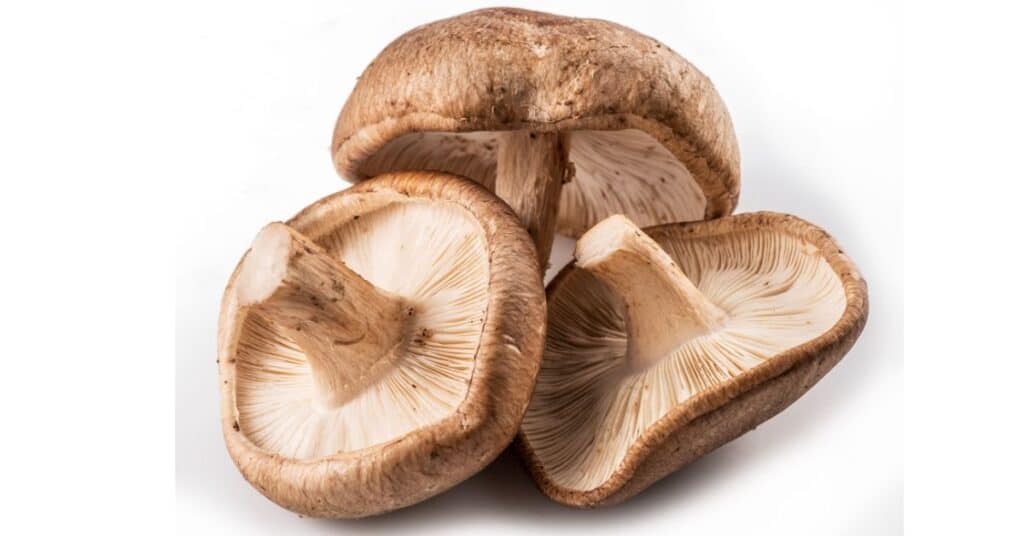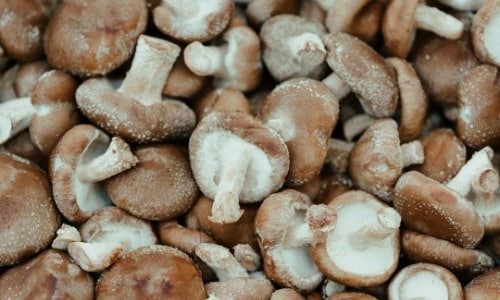Freezing shiitake mushrooms is a great way to preserve their earthy flavor and supple texture for future use. Whether you have a surplus from a bountiful harvest or simply want to take advantage of a sale at your local market, freezing these mushrooms properly can ensure you have a convenient ingredient ready for soups, stir-fries, and other dishes year-round. The process is straightforward and does not require special equipment, making it accessible for every home cook.

Before getting started, it’s necessary to select high-quality shiitake mushrooms that are fresh and free from blemishes or mold. Cleanliness is also crucial, as any dirt or debris can affect the mushrooms’ texture and flavor once thawed. Proper preparation entails gently wiping the mushrooms with a damp cloth rather than soaking them, which can make them waterlogged. Once your mushrooms are clean and dry, you can opt for several freezing techniques, such as flash freezing on a tray before transferring to a freezer bag or container, which prevents the mushrooms from clumping together.
Key Takeaways
- Proper selection and cleaning of shiitake mushrooms are essential for successful freezing.
- Mushrooms can be frozen using different techniques like flash freezing to maintain quality.
- Stored correctly, frozen shiitake mushrooms are convenient for various recipes when thawed.
Selecting Shiitake Mushrooms for Freezing
When you’re choosing shiitake mushrooms for freezing, look for those that are fresh and unblemished. Fresh shiitake mushrooms have a firm texture; if they feel slimy or have wrinkles, they are past their prime.
Pay attention to the color. Your shiitake mushrooms should have a rich, earthy brown tone. Any discoloration may indicate that they are starting to spoil.
Make sure to check for a pleasant, woodsy smell. A sour or off odor can suggest that the mushrooms are no longer fresh.
Here’s a quick checklist to help you:
- Firmness: Press gently; they should be pliable but snap back into shape.
- Color: Consistent, earthy brown with no signs of greying.
- Smell: Woodsy and fresh without any sour notes.
- Surface: Smooth and without any wet slimy spots.
It’s also ideal to select mushrooms that are similar in size to ensure even freezing and thawing later on. Remember, shiitake mushrooms with open caps will have a stronger flavor but they don’t freeze as well as those with closed caps.
Once you’ve selected your shiitake mushrooms, prepare them for freezing by cleaning them gently with a damp cloth rather than washing them as excess moisture can lead to a loss of texture when frozen. Trim away any tough stems as they do not freeze well, and you’ll have perfectly prepped mushrooms ready for freezing.
Preparation and Cleaning

Before you freeze your shiitake mushrooms, it’s crucial to properly prep and clean them. This is done to ensure that your mushrooms are free of dirt and debris, and that they remain in the best condition for freezing.
Trimming Stems
- Trim the Stems: Use a sharp knife to remove the stems from your shiitake mushrooms. These stems are typically tougher than the caps and can have a woody texture.
- Disposal: Discard the stems or save them for use in stocks or broths, as they add flavor.
Washing and Drying
- Rinse Gently: Rinse the mushroom caps under cool running water to wash away any dirt. Do not soak them as they absorb water easily.
- Dry Immediately: Pat the shiitake mushrooms dry with a clean cloth or paper towel to remove excess moisture. This step is vital to prevent ice crystal formation during freezing.
Freezing Techniques
When freezing shiitake mushrooms, it’s important to maintain their texture and flavor. The following methods are effective in preserving their quality.
Flash Freezing
First, clean your shiitake mushrooms gently with a damp cloth and slice them if desired. Then, spread them in a single layer on a baking sheet, ensuring they do not touch. Place the sheet in the freezer for about two hours, or until the mushrooms are fully frozen. This quick-freeze method prevents the mushrooms from clumping together and makes them easier to use in portions later.
Packing in Containers or Freezer Bags
Once the mushrooms are flash-frozen, transfer them to airtight containers or freezer bags. Remove as much air as possible from freezer bags by gently pressing down before sealing them. Label each container or bag with the date of freezing. Stored properly, your shiitake mushrooms can last in the freezer for up to six months. For containers, use rigid plastic or glass containers with tight-fitting lids to prevent freezer burn.
Thawing and Using Frozen Shiitake Mushrooms

When you’re ready to use your frozen shiitake mushrooms, thawing them properly ensures they retain their texture and flavor. Begin by transferring the mushrooms from the freezer to the refrigerator. This allows them to thaw slowly, typically taking several hours or overnight. If you’re in a rush, placing them in a sealed plastic bag and submerging them in cold water can speed up the process.
For cooking, remember that there’s no need to thaw your shiitake mushrooms if you’re going to cook them. Toss them directly into soups, stews, or sautés, and they’ll thaw quickly as they cook, absorbing the flavors of your dish.
Sautéing is a popular method to cook thawed shiitakes:
- Heat a pan over medium heat.
- Add oil or butter.
- Put the thawed shiitakes in the pan.
- Stir frequently until they’re cooked to your liking.
If your shiitakes are still a bit icy, it’s alright; they’ll release the extra water as they heat up. Just extend the cooking time slightly to account for the additional moisture.
Do remember, however, not to refreeze thawed mushrooms, as this can degrade their quality. Once thawed, it’s best to use them within a short timeframe for optimal freshness and safety. Always store them in the refrigerator if you’re not using them immediately after thawing.
Frequently Asked Questions

Before diving into the specifics, it’s essential to understand that freezing shiitake mushrooms can be a simple and effective way to extend their shelf life. Here’s what you need to know to do it right.
What is the ideal method for preserving shiitake mushrooms?
The ideal method involves cleaning the mushrooms, blanching them, and then freezing them in a single layer before transferring to an airtight container or freezer bag. This process helps maintain the mushrooms’ texture and flavor.
Can I freeze shiitake mushrooms after they’ve been cooked?
Yes, you can freeze shiitake mushrooms after cooking. Ensure they are cooled down to room temperature before freezing to prevent ice crystals and preserve their quality.
What are the steps to properly blanch shiitake mushrooms before freezing?
Blanching shiitake mushrooms is done by boiling them for two minutes and then quickly cooling them in ice water. This step halts the enzymatic action that can lead to spoilage and texture degradation.
Is there a difference in quality when freezing mushrooms raw compared to cooked?
Freezing mushrooms raw tends to cause texture changes due to ice crystals damaging the cell structure. Cooking mushrooms before freezing can help minimize this effect and preserve their quality better.
How do you correctly prepare shiitake mushrooms for freezing?
To prepare, clean the mushrooms gently with a brush or damp cloth to remove debris. If blanching, follow the process mentioned above. If freezing raw, slice them if desired, and freeze in a single layer on a baking sheet before storing.
Can shiitake mushrooms be frozen in oil, and how is it done?
Freezing in oil is possible and can aid in preserving the mushrooms’ texture. Sauté sliced mushrooms in oil, cool, and then freeze flat in a single layer. Once solid, transfer to a container for long-term storage.
